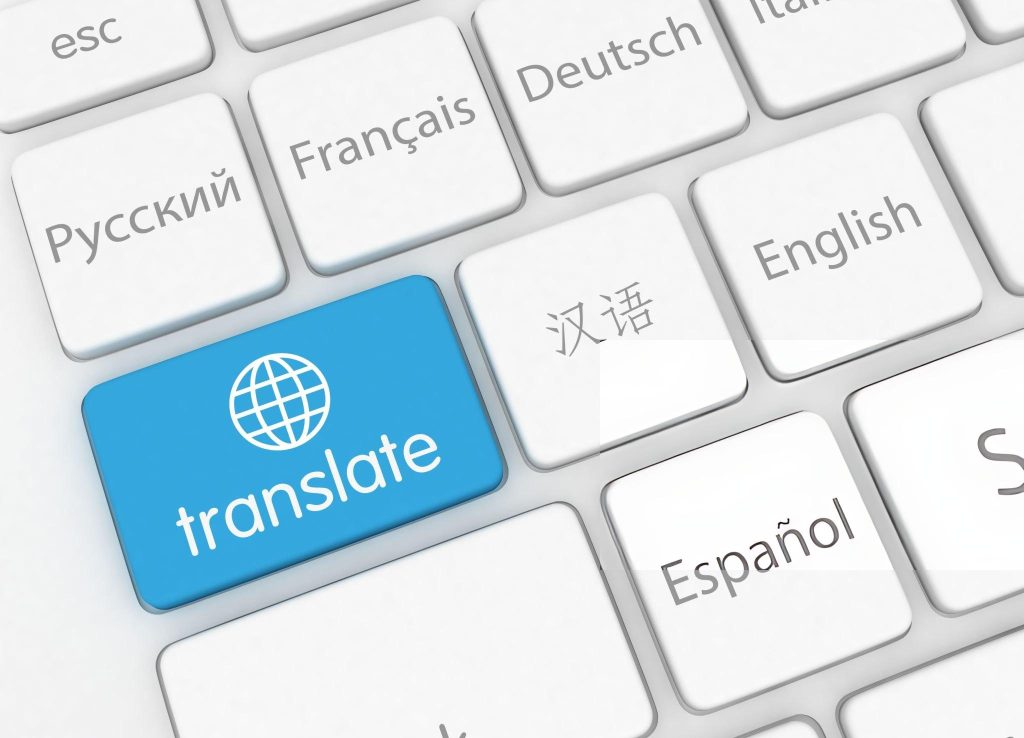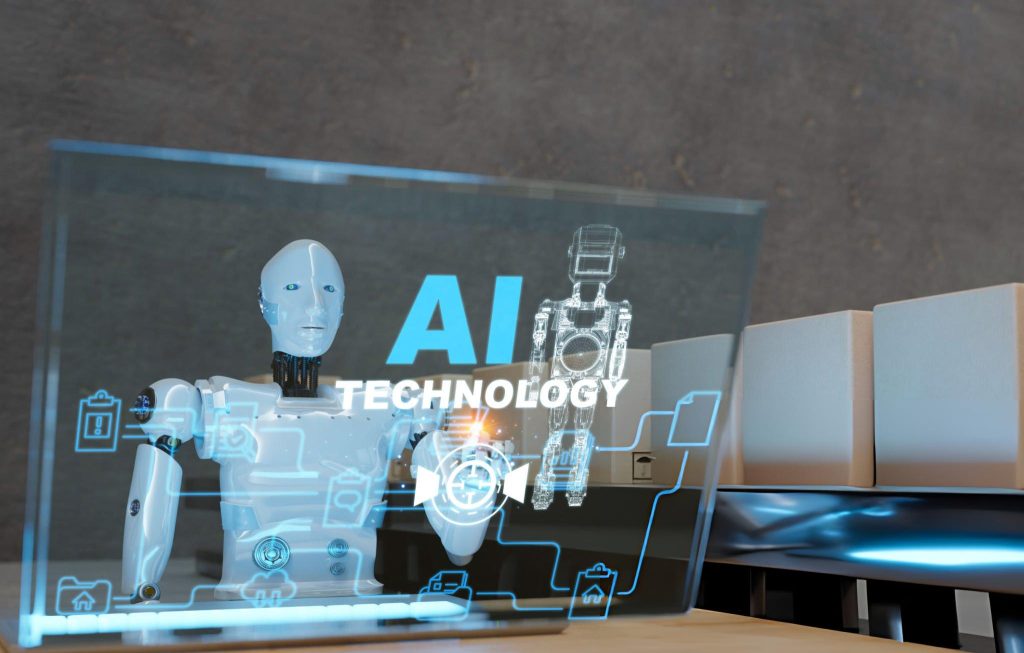
Language is one of humanity’s most powerful tools, yet it can also be a significant barrier. In a world that’s increasingly connected, the ability to communicate across languages is more valuable than ever. AI-enhanced language translation technology is revolutionizing how we bridge these linguistic divides, enabling people to connect in real-time, whether for travel, business, or personal interactions. Powered by advanced machine learning algorithms and neural networks, AI translation tools are transforming language comprehension, making communication more inclusive and accessible for millions.
As artificial intelligence continues to evolve, so does its capacity to handle the complexities of human language. From speech recognition to context-sensitive translations, AI-driven tools are capable of overcoming language gaps that once seemed insurmountable. This article explores the development of AI-enhanced language translation as a continued trend for 2025, the advantages and limitations of current tools, and the future potential of real-time language translation for global connectivity.
The Evolution of AI-Enhanced Language Translation
AI-enhanced language translation builds on decades of research in linguistics, computer science, and artificial intelligence. Early translation programs relied on simple word-for-word substitutions, often leading to inaccurate and confusing results. However, the introduction of machine learning and neural networks marked a turning point, allowing translation programs to “learn” from vast amounts of linguistic data. Today’s AI translation tools can analyze context, syntax, and cultural nuances to produce more accurate, natural translations.
The most significant development in AI translation has been the implementation of neural machine translation (NMT). Unlike earlier methods, which translated text by breaking it down into individual words or phrases, NMT processes entire sentences, allowing for greater accuracy and fluency. With tools like Google Translate, Microsoft Translator, and DeepL, NMT has become the standard for many translation services, bringing AI translation closer to human-level comprehension.
In recent years, real-time translation technology has also gained traction. Real-time translation enables users to communicate across languages almost instantaneously, whether through text or spoken conversation. Powered by advanced algorithms and continuous updates, these tools are designed to work across multiple languages, accents, and dialects, making multilingual communication accessible for users around the world.

How AI-Enhanced Language Translation Works
AI-enhanced language translation relies on a combination of machine learning algorithms, linguistic databases, and neural networks. Here’s an overview of the process behind real-time translation:
- Text Analysis and Tokenization
When a user inputs text or speech, the AI system first breaks down the language into smaller units, known as tokens. This step, known as tokenization, allows the system to analyze each word and its relationship within the sentence. The AI then identifies grammatical structures and linguistic patterns to interpret the text accurately. - Contextual Understanding
One of the most significant advancements in AI translation is its ability to understand context. Neural networks are trained on vast datasets, allowing the system to recognize idioms, colloquialisms, and cultural references. For example, the phrase “break the ice” would be interpreted as “to start a conversation” rather than a literal translation, showcasing the AI’s contextual sensitivity. - Neural Machine Translation (NMT)
NMT systems use deep learning techniques to generate translations that closely match human language. By processing entire sentences or paragraphs, NMT produces fluid, grammatically correct translations that sound more natural. The AI’s ability to “learn” from new data continuously improves the quality of its translations, adapting to evolving language trends and user feedback. - Speech Recognition and Real-Time Processing
For spoken language, real-time AI translation tools rely on speech recognition technology to transcribe spoken words into text. This text is then translated and converted back into audio output, creating a seamless conversation. Real-time translation tools also account for accent and tone, making spoken translations more accurate and easier to understand.
Applications and Advantages of AI-Enhanced Language Translation
AI-driven language translation has a wide range of applications, from personal travel and business communication to academic research and diplomacy. Here’s how AI-enhanced translation is transforming key areas:
1. Travel and Tourism
For travelers exploring new countries and cultures, language barriers can often limit experiences. AI-enhanced translation apps allow travelers to communicate with locals, read signs, and access information in real-time, enriching their journeys. Tools like Google Lens can translate text through a smartphone camera, making it easy to read menus, road signs, and other essential information instantly.
2. International Business
In the global economy, cross-cultural communication is critical for building relationships and conducting business. AI-driven translation software helps companies communicate effectively with clients, partners, and employees across different languages. Many businesses are adopting real-time translation for video conferencing, allowing teams to collaborate without language being an obstacle. Tools like Zoom’s real-time translation feature are designed to create a smoother communication experience, supporting international cooperation.
3. Education and Research
AI translation tools are also valuable in education, where language often limits access to knowledge. Scholars and students can use translation technology to access resources in different languages, broadening the scope of their research. For language learners, AI translation apps offer valuable support in understanding vocabulary and grammar, facilitating language acquisition.
4. Personal Communication
In personal communication, AI-enhanced translation bridges language gaps between friends, family, and online communities. Apps like WhatsApp and Facebook Messenger now offer translation features, making it easier for users to connect across languages. Real-time translation provides instant, context-sensitive translations, supporting more meaningful interactions across linguistic divides.
The Limitations and Challenges of AI Translation
While AI-enhanced language translation offers significant advantages, it still faces several limitations. Understanding these challenges can help users manage expectations and use the technology effectively:
1. Cultural Nuances and Idiomatic Expressions
Language is deeply embedded in culture, and many expressions don’t have a direct translation. Although AI can interpret some idiomatic expressions, it may struggle with complex metaphors, humor, or cultural references. This limitation can result in translations that sound awkward or miss the intended meaning, especially in languages with significant cultural nuances.
2. Dialectal and Regional Variations
Dialects and regional variations present another challenge. Languages like Arabic, Chinese, and Spanish have regional dialects that can differ significantly from one another. AI translation tools are trained on standard language models, which may not fully capture the diversity of dialects and regional speech patterns, leading to misunderstandings or inaccurate translations.
3. Accuracy and Ethical Concerns
Despite improvements, AI translations are not yet 100% accurate, and errors can sometimes lead to miscommunication. This is particularly concerning in sensitive contexts, such as legal, medical, or diplomatic translations, where accuracy is essential. Additionally, as AI systems collect vast amounts of language data, privacy concerns arise, especially in applications that require user input or record conversations for processing.

The Future of AI-Enhanced Language Translation
As AI technology continues to advance, the future of language translation promises even greater accuracy, accessibility, and integration across platforms. Here are some trends shaping the future of AI-enhanced translation:
- Improved Natural Language Processing (NLP)
Advances in natural language processing are helping AI systems become more adept at understanding context, tone, and syntax. NLP improvements could allow translation tools to interpret nuanced language more accurately, creating translations that are virtually indistinguishable from those produced by humans. - Greater Adaptability to Dialects and Regional Variants
AI translation systems are beginning to incorporate more dialectal variations, allowing for a broader understanding of languages in all their diversity. Future models could include adaptive learning features that adjust translations based on user preferences and regional dialects, making communication more personalized. - Integration with Wearable Technology
The integration of AI translation with wearable technology, such as smart glasses or earbuds, is likely to make real-time translation even more seamless. Travelers may soon be able to wear devices that provide real-time translations directly into their ears or display translations through augmented reality, enhancing accessibility in everyday interactions. - Increased Multimodal Translation Capabilities
Multimodal translation, which incorporates text, audio, and visual elements, is another area of growth. AI-powered devices that combine language translation with object recognition and contextual analysis could provide even more comprehensive support for travelers, businesses, and educators, allowing for richer communication.
Conclusion: A More Connected World Through Language
AI-enhanced language translation represents a profound step forward in bridging communication gaps across cultures and languages. As the technology continues to improve, real-time translation tools will enable individuals from diverse backgrounds to connect, collaborate, and share ideas without language barriers. For travelers, business professionals, and educators alike, AI translation is making the world a smaller, more connected place, allowing for deeper and more meaningful interactions.
While challenges remain, the potential of AI-enhanced language translation is undeniable. By combining technology with the human desire for connection, AI is creating a world where understanding and empathy are within everyone’s reach—regardless of the language they speak.